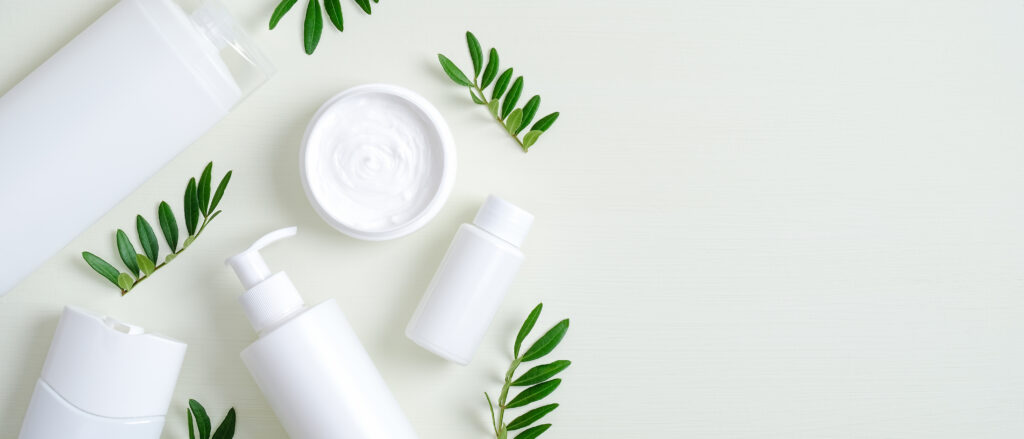2025 at Deveraux: Four Pillars, One Purpose
The beauty industry continues to evolve—but it’s not just about trends anymore. It’s about transformation. At Deveraux Specialties, we believe that the most effective innovation in personal care comes from clarity of focus. That’s why our 2025 Marketing Campaign is anchored in four distinct yet interconnected pillars—each addressing a critical area of modern cosmetic science.
These pillars aren’t abstract themes. They’re strategic frameworks designed to help formulators, brand builders, and product developers navigate today’s most pressing consumer expectations and formulation challenges.
Here’s a preview:
Together, these pillars serve as a guide for formulators building the next generation of products—products that are as thoughtful as they are effective.
Beauty for All: Rewriting the Rules of Cosmetic Formulation
In today’s cosmetic landscape, the concept of inclusivity is no longer a trend—it’s a formulation baseline. Consumers are demanding products that reflect the world as it is: diverse in skin tones, hair textures, sensitivities, gender expressions, ages, and cultural rituals. At Deveraux Specialties, our first pillar—Beauty for All—challenges formulators to engineer cosmetic science that is not just universally accessible, but genuinely effective for a broader range of people.
This is not idealism. It’s precision chemistry meeting modern expectations. If beauty is for everyone, then formulation must be, too. That means understanding that inclusive beauty isn’t just a message—it’s a scientific responsibility.
The Real Challenge of Inclusive Formulation
Inclusivity in cosmetics begins with biology, not branding. Melanin content, sebum production, stratum corneum thickness, collagen density, hair morphology, and even microbiome composition differ across ethnicities and individuals. Yet for decades, many mainstream formulations were developed and tested on a narrow demographic—predominantly lighter Fitzpatrick skin types and Eurocentric hair textures. That’s not just ethically outdated—it limits product performance and leaves many consumers underserved.
Let’s look at specific examples:
► Pigment dispersion: What appears seamless on lighter skin may look ashy or uneven on darker tones without the right optical diffusers and base systems.
► Moisturizers and occlusives: Sebum levels vary widely, especially in African and South Asian populations. A formula that balances hydration for one group may clog pores or feel greasy for another.
► Exfoliants: Alpha hydroxy acids, if not carefully balanced, can lead to hyperpigmentation in melanin-rich skin due to increased photosensitivity and inflammation.
► Preservatives: Skin pH, lifestyle, and climate affect how preservatives behave on the skin and in formulas. A system that works in a water-based serum in dry climates might not survive in oil-rich creams applied in tropical humidity.
Inclusive formulation is not a “one-size-fits-all” endeavor. It’s about understanding differences at the molecular level and making deliberate choices that work for a wider range of users.
Ingredient Innovation: Building the Beauty for All Toolbox
Formulators need versatile, high-performance ingredients that function across a wide demographic. At Deveraux Specialties, we’ve curated a collection of ingredients that support inclusivity in formulation—without sacrificing efficacy or elegance.
► Universal Sensory Enhancers
Textures matter. They affect how users perceive a product and whether they’ll repurchase it. A universal sensory experience is hard to achieve, especially across skin types. Lightweight esters, biomimetic oils, and natural silicone alternatives in our portfolio provide luxurious spreadability without leaving residue or shine. These work on dry skin, oily skin, and everything in between.
Look for multifunctional emollients with rapid absorption and high skin affinity. These provide a smooth finish that complements all tones—no white cast, no greasy film, just balanced skin feel.
► Inclusive Color Technologies
Matching foundation or tinted SPF across the full spectrum of skin tones requires highly stable, well-dispersed pigments. We offer coated iron oxides, natural colorants, and dispersion systems that provide deep chromatic flexibility and photostability. These pigments don’t oxidize or shift color post-application—critical for deeper tones where mismatches are most noticeable.
Color formulation also includes subtle adjustments: undertones (warm, cool, neutral), finish (matte vs. dewy), and how a pigment performs under different lighting conditions. Our ingredients make it possible to build shades that are inclusive from the start—not just shade extensions after the fact.
► Barrier Boosters for All Skin Realities
All skin has a barrier—but not all barriers are the same. Consumers managing eczema, hormonal acne, post-inflammatory hyperpigmentation, or sensitive skin need targeted solutions that don’t compromise integrity.
Our portfolio includes ceramide complexes that mimic the skin’s natural lipid structure, sugar-based humectants with prebiotic benefits, and microbiome-friendly moisturizers that adapt to a range of skin needs. Whether your consumer is 18 or 68, the skin’s ability to retain moisture and resist inflammation should be protected—not just soothed after damage.
These barrier-boosting actives can be layered or customized based on consumer profile: more occlusion for aging or dry skin, lightweight hydration for younger, oily-prone skin.
► Haircare Without Borders
Hair is cultural, personal, and scientifically complex. Inclusive haircare starts by recognizing that curl patterns, porosity, oil production, and breakage risk differ widely.
We offer film formers that enhance definition and reduce frizz in coily and kinky hair types—without stiffness. Emollients with low molecular weight help penetrate the hair shaft without buildup, ideal for both straight and highly textured hair. Our botanical actives support scalp health and strengthen the hair fiber, important for those who wear protective styles or color-treated hair.
These ingredients can be used in shampoos, leave-ins, masks, and stylers with customizable performance across hair types—from fine and straight to dense and coily.
Modern Formulation Considerations
Creating inclusive products isn’t about checking boxes. It’s about understanding variables that influence real-world product performance:
► Skin tone and light refraction: Ingredients must behave predictably under different lighting. Optics matter.
► Geography and climate: A moisturizer that excels in Arizona might fail in Mumbai. Humectant ratios and volatile carriers matter.
► Gender identity and presentation: Many modern consumers reject binary marketing. A universal product must perform regardless of whether it’s used post-shave, under makeup, or on a bare face.
► Age and hormonal shifts: Formulations should adapt to skin in transition—teenage acne, postpartum dryness, menopausal sensitivity.
Testing must also evolve. We recommend multicultural panel testing and diverse skin patch trials as standard practice—not an afterthought. Inclusive clinicals and consumer perception studies improve not just efficacy, but trust.
Moving Forward: Designing for the Future
If you’re developing a new line—or reformulating an existing one—start by asking these questions:
- Who is being excluded from this formula, and why?
- Do the actives perform consistently across skin tones, hair types, and sensitivities?
- Is the sensory experience neutral enough to be universal, but specific enough to satisfy?
- Can this product live in multiple cultural routines or application methods?
By embedding these questions into your development cycle, you’re not just formulating better—you’re building trust with a broader consumer base.
Progress Through Precision
Beauty for All is not a tagline. It’s a design requirement. One that calls for rigor in research, creativity in formulation, and humility in understanding human diversity. With the right ingredients, clinical data, and user feedback loops, it’s possible to develop products that deliver results across the spectrum—of tone, texture, age, and identity.
At Deveraux Specialties, we are committed to helping formulators create solutions that work for more people, more often. Because when you formulate with intention, inclusivity becomes not just achievable—it becomes the default.
SOURCES:
- NATRUE: The Role of Natural and Organic Cosmetics in Inclusive Beauty
https://www.natrue.org/consumer/inclusive-beauty/ - Mintel: Inclusive Beauty: Meeting Diverse Needs
https://www.mintel.com/beauty-and-personal-care-market-news/inclusive-beauty-meeting-diverse-needs/ - Cosmetics & Toiletries: Formulating for Skin of Color
https://www.cosmeticsandtoiletries.com/research/literature-data/article/21836609/formulating-for-skin-of-color - ScienceDirect: Racial/Ethnic Differences in Skin Properties
https://www.sciencedirect.com/science/article/abs/pii/S0022202X1553709 - Happi: Diversity in Hair Care Formulation
https://www.happi.com/contents/view_online-exclusives/2021-03-10/the-future-of-textured-hair-care-formulation/








